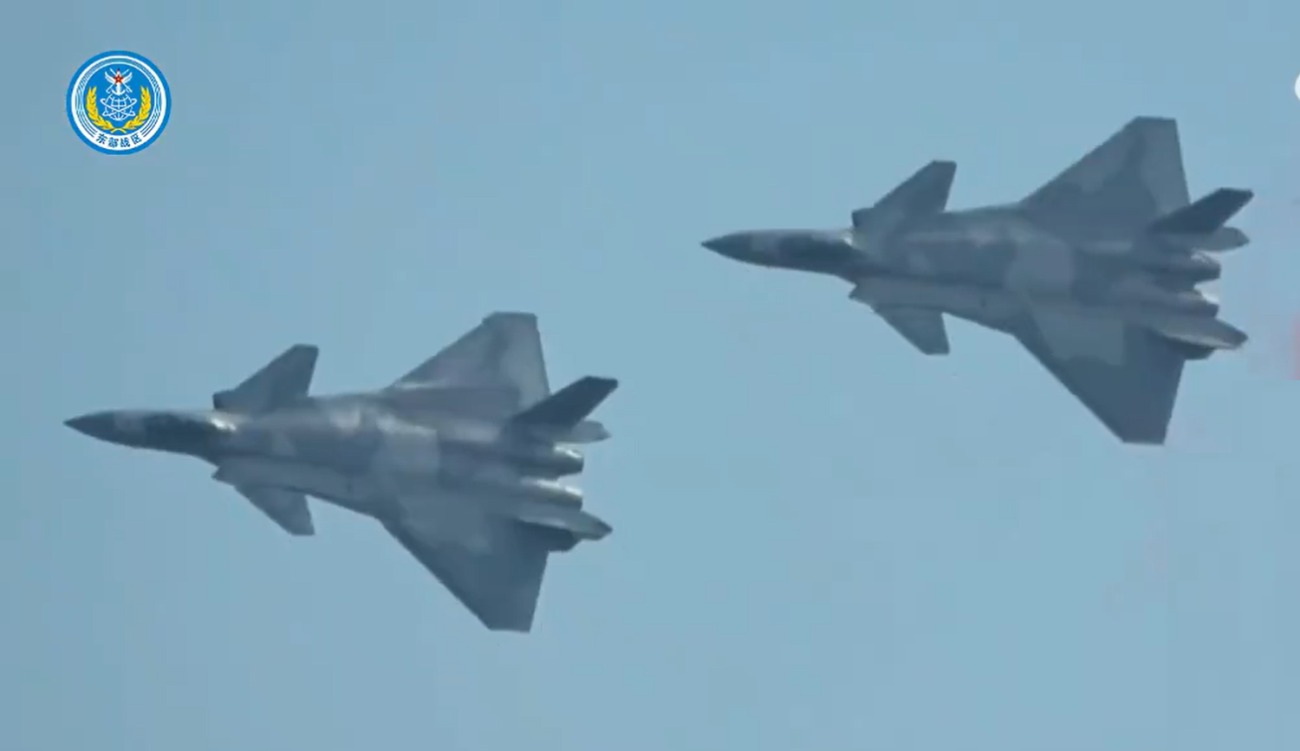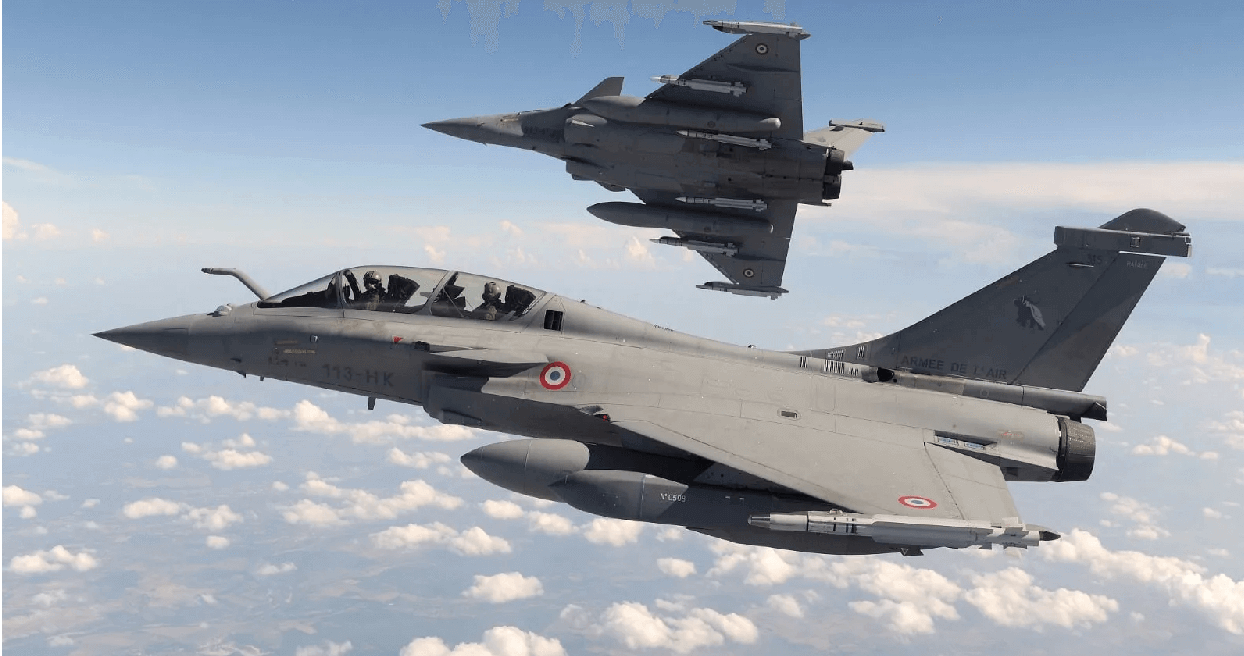Keeping an eye on China, the Indian Air Force is quietly upgrading its infrastructure at 20 air bases along the eastern border. It is not only adding hardened aircraft shelters and munition centers to carry out China-centric operations in case of an eventuality, but it is also constructing additional runways to offset the increased civilian traffic and to have a plan B should one of the runways be bombed by the enemy forces during the war.
For instance, a second runway is being constructed at the strategic Leh airbase in Ladakh, which has been the center point of several clashes between the Indian and Chinese military in the last few years. The base is critical for maintaining the Indian military’s operation along the Line of Actual Control with China and Siachen.
The base is capable of night operations by fighters and transport aircraft of the IAF. Rafales, MiG-29, Sukhoi-30, and Apache have been operating from the base regularly since the relations with China nose-dived.
It is the only way to ferry men and material when harsh winters cut off road links to the region. Located at 10,000 feet, Leh will be the first high-altitude air base in the country to have two runways.
In 2020, the base was crucial in airlifting 68,000 men and tanks to bolster India’s position in the eastern sector.
The Tribune quoted an officer saying: “Military, as well as civilian flights at Leh, have increased significantly over the past few years, but the window of operations for aircraft remains limited to morning hours due to rarified air and climatic conditions.”
In April 2024, satellite imagery revealed the extent of infrastructure development at the Chabua Air Base. This key base in the eastern command of the IAF near the border with China is also home to Sukhoi Su-30MKi fighter jets. It highlighted the extensive renovations and construction at the base.
The Chabua airbase, a crucial facility for the Indian Air Force under its eastern command near the Chinese border, has been undergoing extensive renovations, recent imagery highlights the scale & significant progress achieved on-site pic.twitter.com/nD0sZGwpJp
— Damien Symon (@detresfa_) April 15, 2024
The image revealed the construction of additional taxiways, hardened shelters for fighter aircraft, and underground munition storage. The additional runways and taxiways can help sustain high-tempo operations should the standoff with China spiral into a full-fledged conflict.
The image also shows an “improved” taxiway that could be used for drones.
The infrastructure upgrade contract was signed in 2020, but the heightened tension with China has put them in the high-priority category. Under the Rs 1200 crore project with Tata Power SED (TPSED) for the Modernisation of Airfield Infrastructure (MAFI), 37 airfields of the IAF, Indian Navy, and Indian Coast Guard have been identified for the upgrade.
The construction of a 2.7-km runway at the Nyoma air base in Ladakh, just 23 kilometers from its border with China, will be completed in October 2024. The new runway, at 13,700 feet, will be a boost to the IAF’s operations in the sector.
Support infrastructure at the Nyoma air base, including hangars, the air traffic control building, and hard standing (hard-surfaced areas for parking vehicles and aircraft) will be ready by the end of 2025.
The Nyoma airstrip was operational in 1962 when the two countries fought a short but bloody war. Soon, it fell out of use, only to be reactivated in 2009 when an An-32 aircraft landed there. Since then, the C-130J Super Hercules has operated from the airstrip.
At the height of the standoff with Chinese forces in 2020, the IAF moved its Mi-17 medium-lift helicopters, CH-47F Chinook heavy-lift helicopters, and AH-64E Apache attack helicopters to Nyoma to support the forward deployment of troops and gather surveillance and intelligence.
India Matches China’s Frantic Infra Building
Since the 2020 Galwan standoff, Beijing has been scaling up its air assets along the LAC. A recent image of Shigatse Air Base in China showed the deployment of China’s 5th-generation fighter jet, the Chengdu J-20 Mighty Dragon.

As reported by the EurAsian Times on May 30, a set of satellite images obtained by ‘All Source Analysis’ shows at least six J-20 fighter jets stationed at the Chinese Shigatse Air Base, located just over 150 kilometers from the LAC.
The satellite image was obtained by Planet Labs on May 27. In addition to the six J-20 stealth fighters, at least eight J-10 aircraft and one KJ-500 Airborne early warning and control aircraft can also be seen parked at the air base in Shigatse, which is close to the eastern sector of the LAC.
The deployment of the J-20s at Shigatse Peace Airport is significant. It is located less than 300 kilometers from Hasimara Air Base in West Bengal, home to the Indian Air Force’s (IAF) Rafale fighter jets. Indian military bloggers expressed alarm over the deployment, highlighting the gap between the two air powers. India, unlike China, does not have a fifth-generation aircraft in its arsenal.
The Shigatse base is strategically located along the central portion of the China-India border and is closer than any other airport to the disputed Doklam area where the 2017 border standoff occurred. In 2017, China added a new 3,000-meter-long auxiliary runway equipped with seven helipads to the airport’s existing runway.
The new runway runs at an oblique angle to the existing runway instead of parallel, making it difficult for enemy forces to render both runways inoperable in a single strike.
An analysis of satellite imagery shows that China’s expansion of airfields along the Line of Actual Control (LAC) since 2020 has enabled its military to conduct a wider range of operations and counter India’s comparative advantages in some areas.

The Chinese infrastructure push has included the construction of new airbases, missile sites, roads, bridges, reinforced bunkers, underground facilities to protect military assets from aerial strikes, accommodation for soldiers, and ammunition depots.
It has also activated a second runway at the Hotan airbase in the Xinjiang region. At Hotan, a new runway has been constructed along with additional tarmacs, hangars, and other facilities. Less than 5 km southeast of the main airport area, a surface-to-air missile (SAM) complex is being upgraded, enhancing the air defenses at the airport and surrounding areas.
According to the China Power Project of the Centre for Strategic and International Studies (CSIS), China has been upgrading dozens of airports and heliports in its Western regions of Tibet and Xinjiang. The upgraded facilities will not only help in last-mile connectivity in the unforgiving terrain but will also provide options to the PLA “to launch airborne surveillance and reconnaissance missions, as well as strikes and counter strikes in the event of a conflict.”
Through open-source material, China Power has identified 37 airports and heliports within Tibet and Xinjiang that have been newly constructed or upgraded since 2017, the year China and India had a 73-day standoff on the Doklam Plateau.
“At least 22 of these are identifiable as military or dual-use facilities or are expected to be once they are completed. The pace of this activity sped up significantly in 2020. That year alone, China began constructing seven new air facilities and initiated upgrades at seven others,” the report notes.
The new facilities also fill large gaps along the Indian border where there were no airports earlier. These will give the PLA Air Force (PLAAF) new bases to project airpower against India.
- Ritu Sharma has been a journalist for over a decade, writing on defense, foreign affairs, and nuclear technology.
- The author can be reached at ritu.sharma (at) mail.com
- Follow EurAsian Times on Google News




